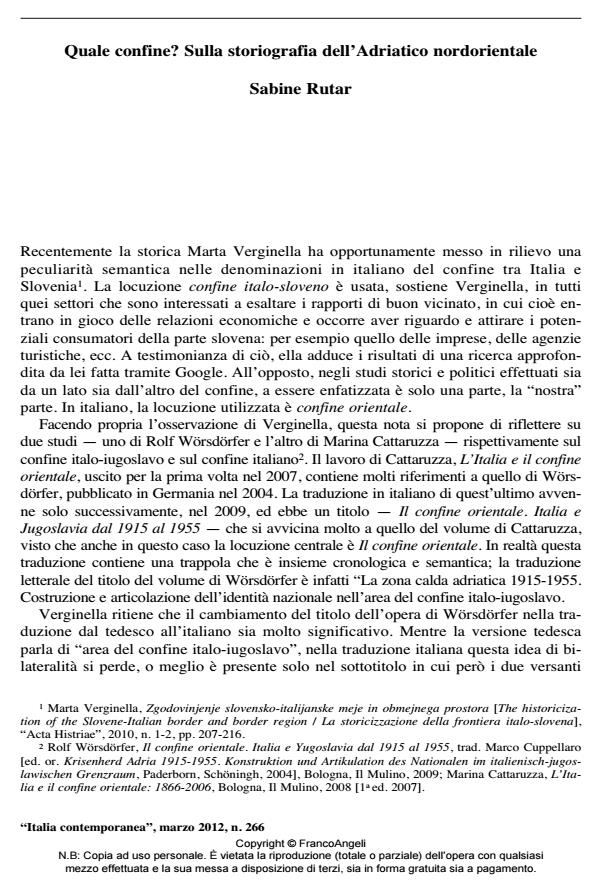Which border? On northeastern Adriatic historiography
Journal title ITALIA CONTEMPORANEA
Author/s Sabine Rutar
Publishing Year 2012 Issue 2012/266 Language Italian
Pages 10 P. 103-112 File size 101 KB
DOI 10.3280/IC2012-266006
DOI is like a bar code for intellectual property: to have more infomation
click here
Below, you can see the article first page
If you want to buy this article in PDF format, you can do it, following the instructions to buy download credits

FrancoAngeli is member of Publishers International Linking Association, Inc (PILA), a not-for-profit association which run the CrossRef service enabling links to and from online scholarly content.
Discussing recent historical research on the Italian-Yugoslav borderline area, this essay points out the differences and omissions, as compared to the original German version, that may be found in the Italian translation of the book by Rolf Wörsdörfer, Il confine orientale. Italia e Jugoslavia dal 1915 al 1955, indeed a relevant contribution to the entangled history, and not only because it was one of the first studies on South-East Europe combining social and historical parameters. Furthermore, the A. contextualizes within the present debate among Italian historians the book by Marina Cattaruzza, L’Italia e il confine orientale, intended to demolish the persistent Italian myths through an exhaustive reconstruction of the true facts concerning the eastern border of Italy, according to a strictly Italian historical perspective. Though looking at the same geographic area from different viewpoints, the works of Wörsdörfer and Cattaruzza show a comparable consistency and both represent valuable terms of reference for a reflection on the present state and future prospects of research on that border region.
Keywords: Italian-Yugoslav borderline, Italian eastern border, Rolf Wörsdörfer, Marina Cattaruzza, entangled history, Italian historiography
Sabine Rutar, Quale confine? Sulla storiografia dell’Adriatico nordorientale in "ITALIA CONTEMPORANEA" 266/2012, pp 103-112, DOI: 10.3280/IC2012-266006